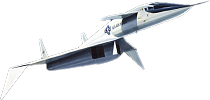Zixinus wrote:Welcome to the forum.

Thanks.
First off, why are the aliens invading/attacking? The reason may define their weaponry very well. Also, can you explain the alien's attitude towards battle in general?
They're not invading in the classical sense. The initial attacks are meant to gather lots of samples of human tissue and DNA, so that the XVI organism (a virus-like parasite living in the aliens' bloodstream, possessing a distributed intelligence) which psionically controls the aliens can re-engineer itself to infect and control humans. To that end, the initial weapons are mostly taken from previously conquered civilisations. In our premise humanity is the last independent, intelligent race in the galaxy -- the rest of the galaxy has been pretty much raped and left for dead by the ever-expanding alien collective.
Also, robots can be great shock-troops. No sense in wasting powerfully augmented warriors to battle enemies, when a hoard of mass-produced automatons can weaken potential enemies.
We will be featuring robots extensively in the game.
To run it down, sending in warriors on foot, like in X-com, is only worthwhile if you want something from an area. In the case of a city, possible persons like important people or intellectuals, or materials and resources like fuels from an atomic plant. To cause damage in general, is not worth it.
We don't feature missions solely for destruction, except as retaliation and suppression against PHALANX, the player-controlled anti-alien organisation.
An attitude that you should keep in mind, is that any soldier or experienced warrior would rather choose simple and reliable weapons over complicated ones. That's why plasma weapons are worthless: they are overly complicated thus unreliable, ineffective compared to weapons like lasers or conventional firearms and just plain pointless. Beyond that, the more fire-power one has, the better.
I'm just working with the stuff I've been given. Considering the design of the plasma weapon models, I came up with the only plausible explanation I could think of. Particle beam weapons are the other family of alien weapons we've got in the game right now, and we're working on projectile-firing alien launchers and sniper rifles. We already have railguns and other plausible weapons technology in the game as well, with electrolasers on the books for the next version. There aren't many other radically different (and effective) weapons concepts that I can think of, but maybe people here can help.
Thanks, I'll give it a look when I get some time.




